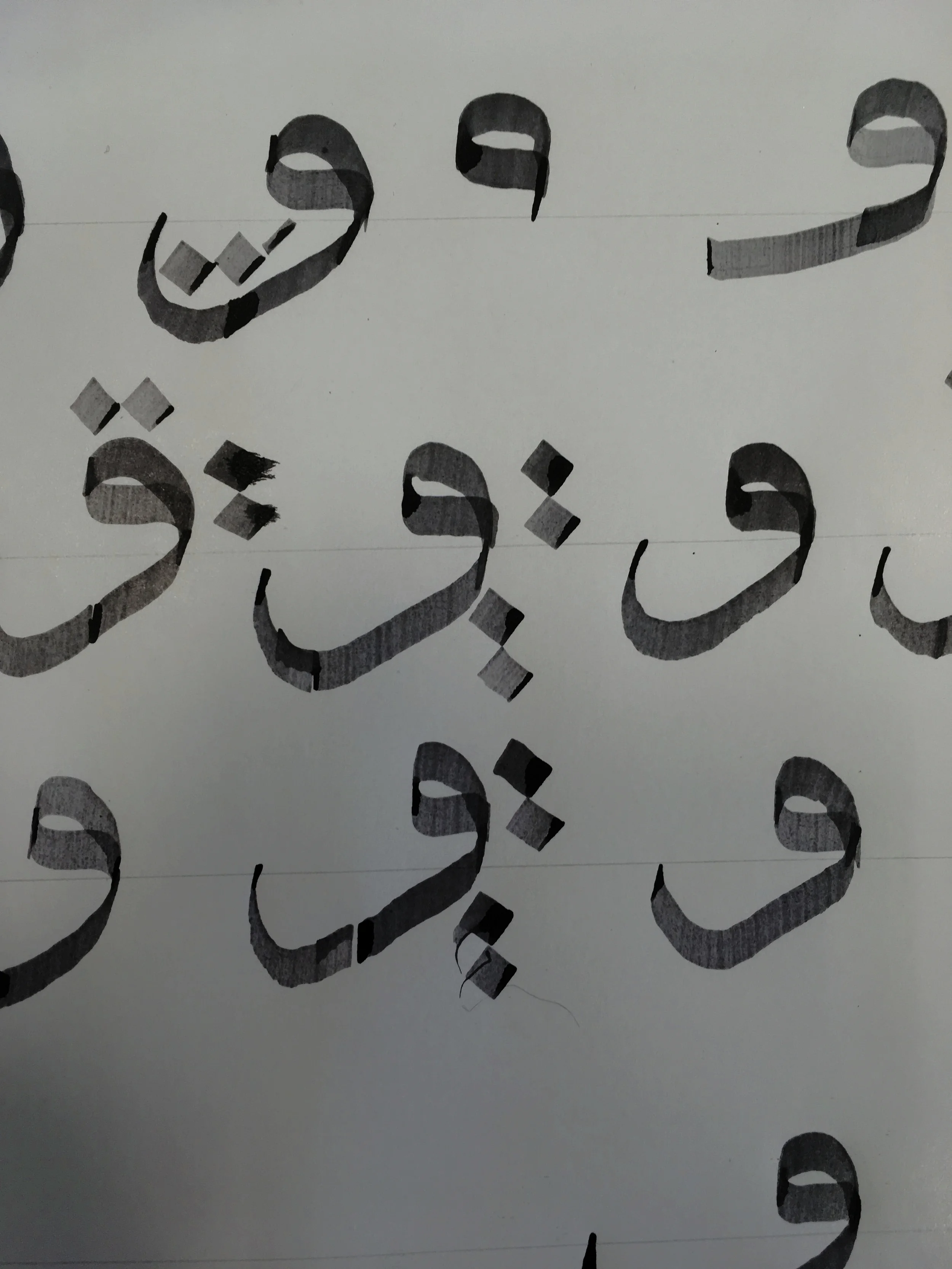By Charles Fromm
Though I have always been creatively inclined, my road to Arabic calligraphy likely started with graffiti and even photography.
As a young child, taking art classes in school growing up, I could not make “well-rendered” or “accurately” drawn pieces to save my life. But I was good with graphics, imagery and composition. As I got older, graffiti took a more central role in my creative pursuits. Again, I could not compete with the elaborate, multi-colored murals of my peers, however, after hours and hours of practice, I could sign my name in a clean, proportionate, stylistic manner. This is “tagging” and to many it is not considered art, but to me, it always was.
A creative piece from a recent Scripts 'n' Scribes workshop
Of course in the graffiti world there are many other aspects taken into account: placement, color, etc… and different people write for different reasons. Some for their fellow writers, some for the public and even some for the police. It was here that I was introduced to letterforms, typography and design. Later, I would carry some of these skills over into photography, which is still my passion and part of my professional background.
Spending years studying Arabic, living and working in the Middle East, I was familiar with the Arabic alphabet and calligraphy, but always figured that it was too hard to learn -- after all, even writing in Arabic was difficult for me, much less cultivating the patience and fortitude to master penmanship in another language. Especially since I am not artistically inclined, I balked at first.
The Smithsonian’s Art of the Quran exhibit was a huge awakening for me. Honestly I had never seen anything like it, even in Istanbul’s Museum of Islamic Art. There was something deeply moving about the tradition of art in Islam. After coming across Scripts 'n' Scribes, I participated in a one-day introductory workshop and was immediately hooked.
Scripts 'n' Scribes introduced me to much more than the art form of Arabic letterforms -- it showed me that this beautiful practice, and all that it entails, is actually accessible. This is a centuries old tradition, passed down from master to student and back again. The implements used and curriculum haven’t changed for half of a millennia. Having access to master calligraphers who have studied under some of the most renowned in Turkey is an amazing opportunity and one you don’t come across often.
Corrections by instructor Khalid Casado in red ink



